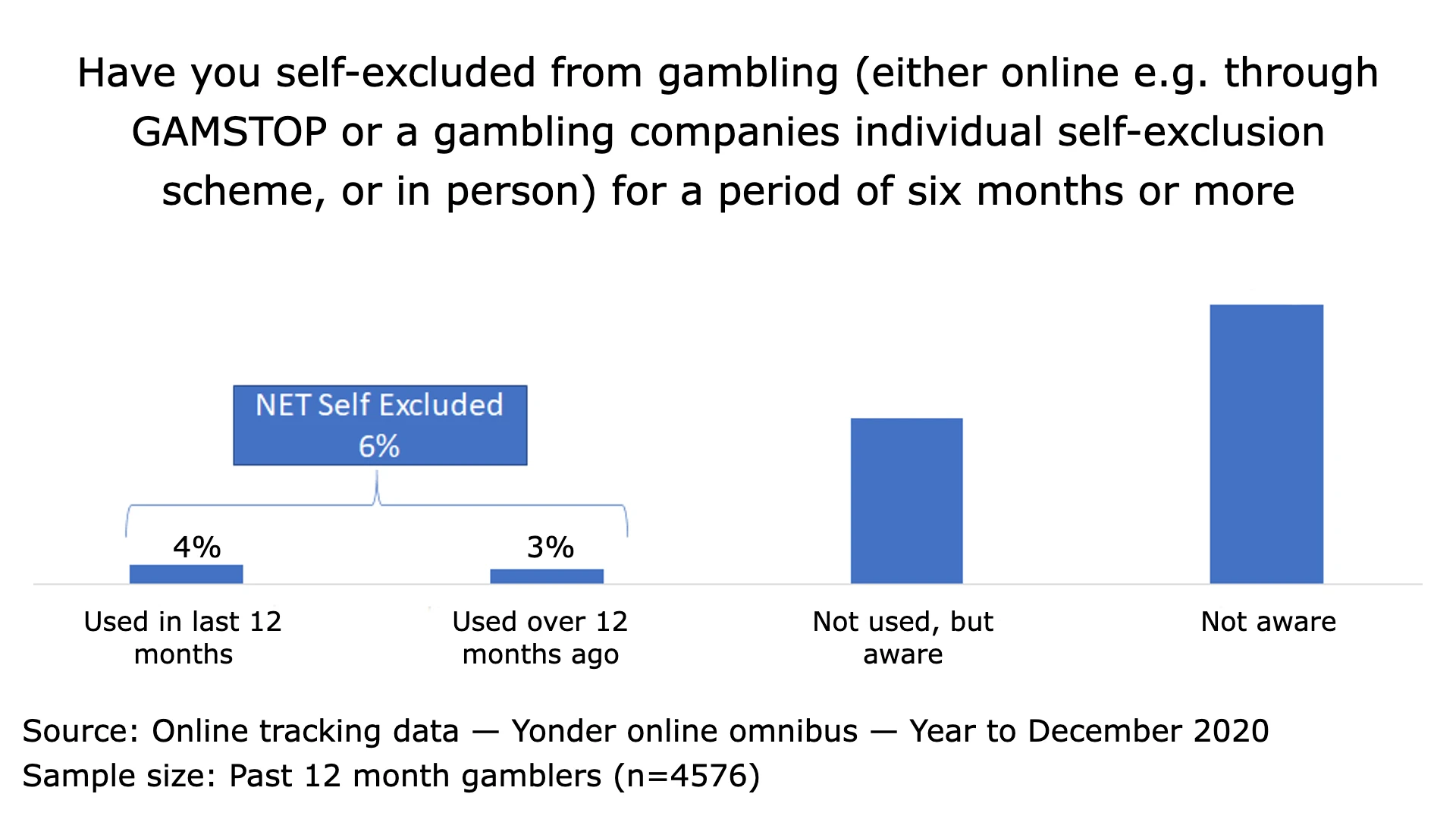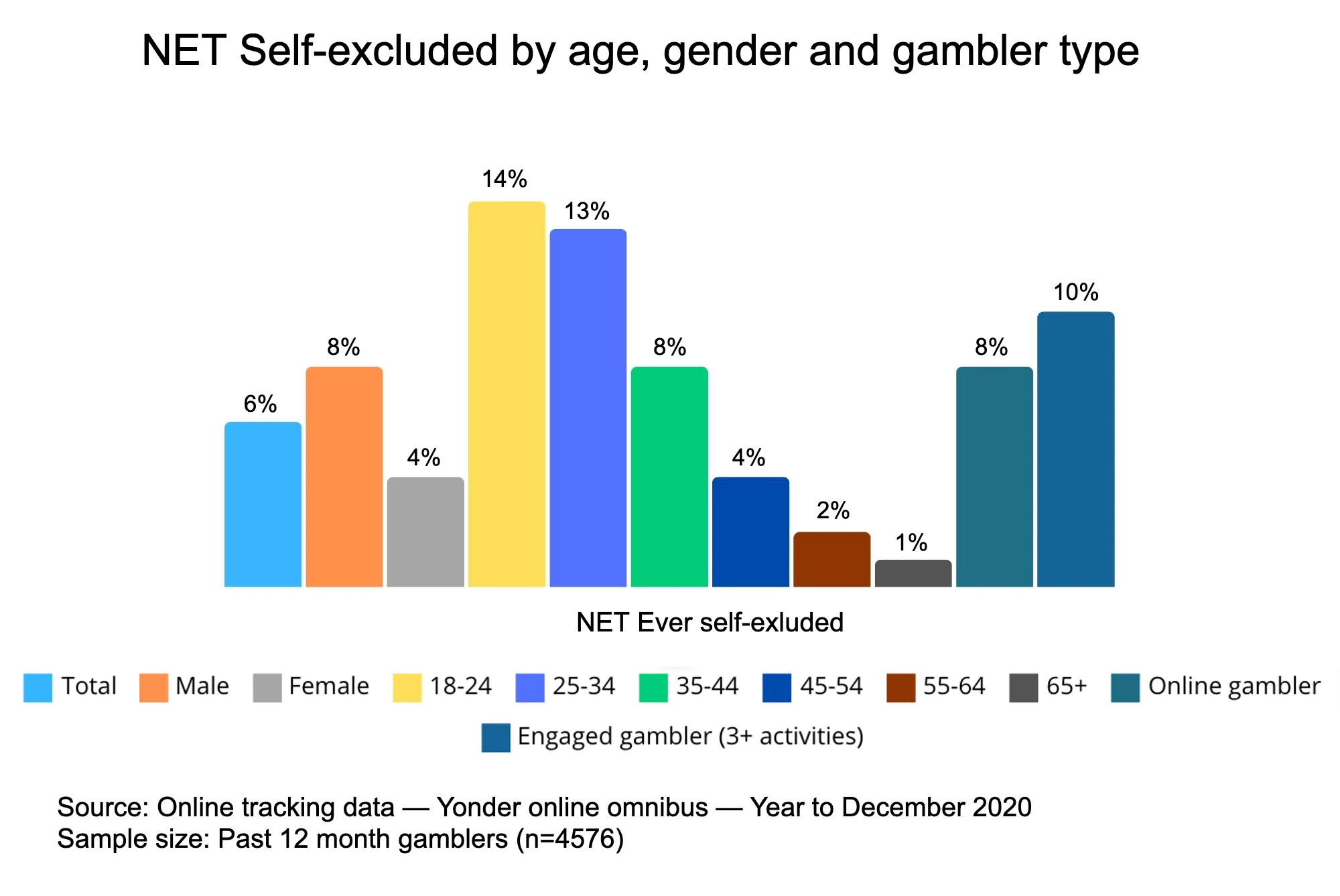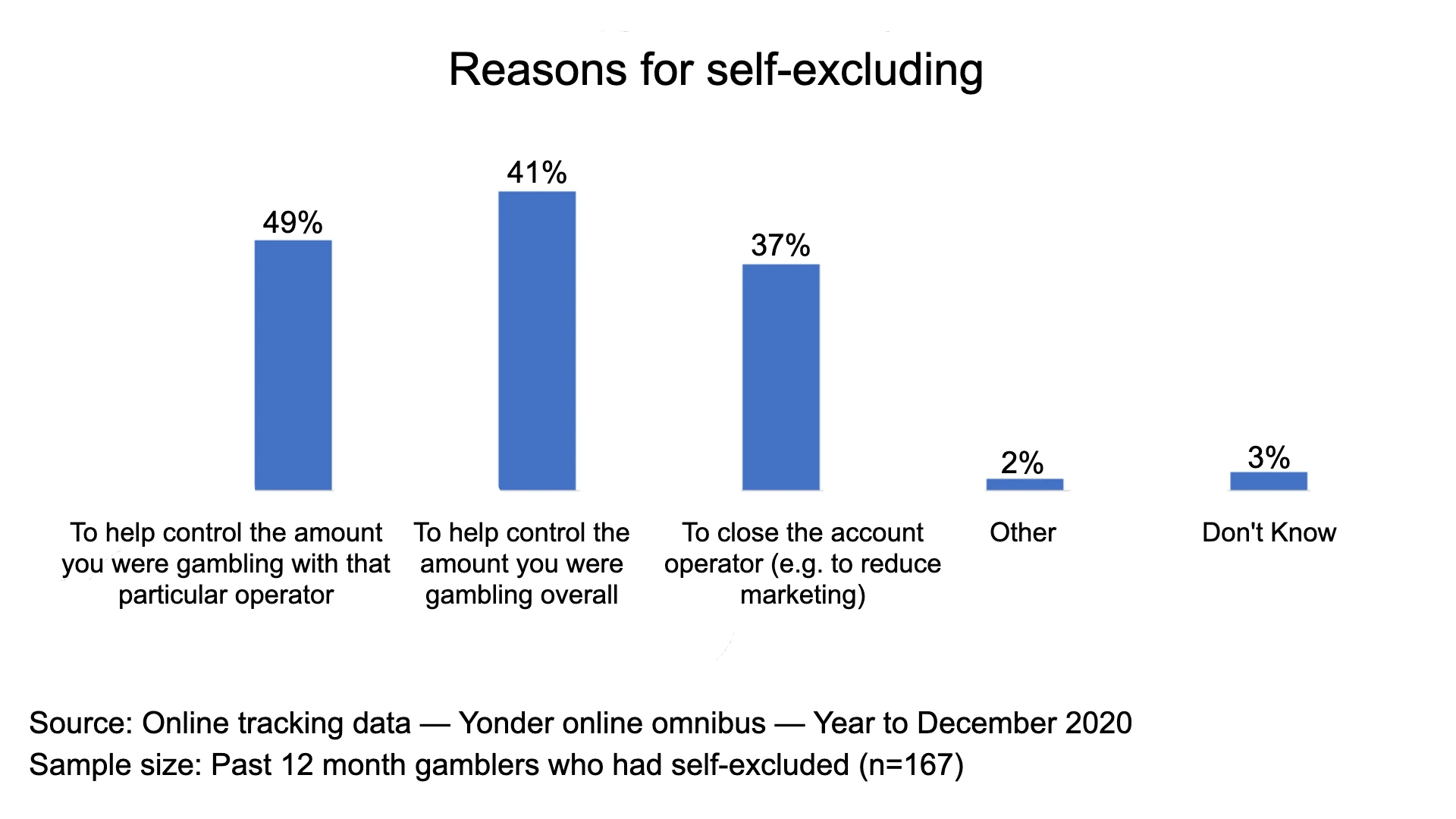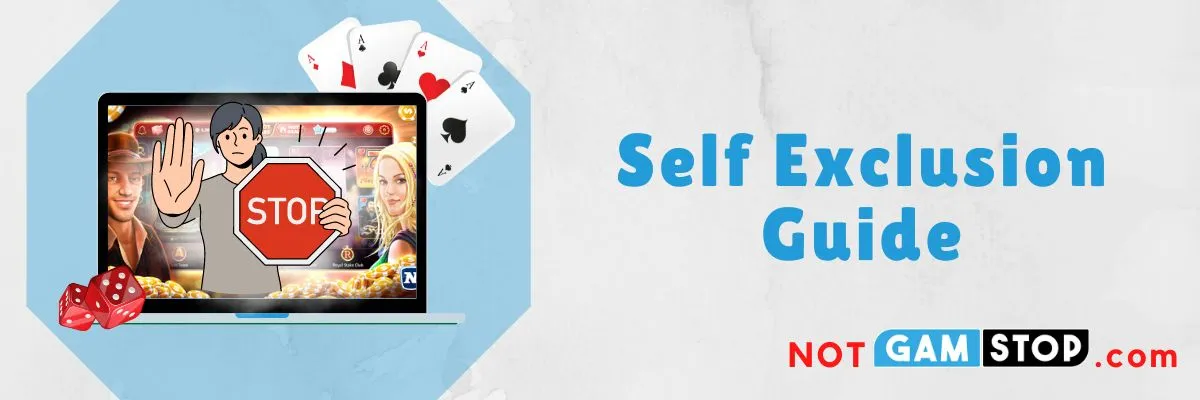While self-exclusion from gambling platforms is an option known to some players, only around 6% have taken advantage of it so far. This highlights that there is a certain awareness of limiting one’s participation in gambling through self-exclusion. However, it is concerning that more than half of players are completely unaware of the self-exclusion option. If you have encountered restrictions due to such schemes, refer to our guide on how to bypass GamStop.
Our team at Not GamStop, an independent online casino review website, aims to provide useful information and recommendations on the best online betting options for players in the United Kingdom. We especially focus on assisting those who have faced restrictions on gambling sites due to self-exclusion programs like GamStop. Although over a third (34%) of players are familiar with the self-exclusion option, they have never actually self-excluded.
This may indicate potential barriers or a lack of understanding of self-exclusion as an effective means of control. It is particularly worrying that such a large proportion of players remain unaware of this option to limit their gambling activities.



This data not only highlights the importance of self-exclusion awareness, but also highlights the critical role such programmes play in maintaining responsible gambling practices.
Self-Exclusion — Definition and Overview

The effectiveness of self-exclusion depends on the severity of the gambling problem. For those noticing initial behavioural changes, it can effectively prevent further issues from developing. However, if an addiction has already formed, self-exclusion should complement professional interventions. Overall, self-exclusion can become a key step towards regaining control over gambling behaviour and improving quality of life by demonstrating a conscious choice for responsible gambling.
How to self-exclude
You can self-exclude yourself from either a single casino or multiple gambling platforms. There are various self-exclusion options available, including:
Self-exclusion from just one gambling website or app
- Go to the online casino you want to self-exclude from.
- Find the ‘Responsible Gambling’ or ‘Safe Gambling’ page.
- Follow the instructions there for self-excluding.
- If you’re unsure how to do it, contact customer support.
Self-exclusion from one arcade, betting shop, or casino
- Go to the site you want to self-exclude from.
- Speak to a staff member or manager about your wish to self-exclude.
- There’s no need to bring money with you.
- Make sure you have several passport-sized photos so staff can identify you.
- Don’t forget to get a copy of the self-exclusion form.
Self-exclusion from all gambling websites
If you want to exclude all gambling sites yourself, we strongly recommend using the GAMSTOP service. This service allows UK residents to block access to all gambling casinos.
You can choose to self-exclude for 6 months, 1 year or 5 years. In addition, each online gambling platform is required to provide users with the self-exclusion option directly from the company.
This feature is usually found under the Responsible Gambling or Safe Gambling section of their website. If you need help, feel free to contact support via phone or email.
To block gambling websites without special software follow these streamlined steps:
- Open your browser.
- Click on ‘Tools’ at the top right corner of the browser.
- Select ‘Internet Options’ at the bottom of the menu.
- Go to the ‘Content’ tab and open it.
- Find and click on ‘Content Advisor’, then press ‘Enable’.
- If not already selected, click on the ‘Ratings’ tab.
- Under ‘Depiction of Gambling’, click the icon and adjust the slider all the way to the left to ‘None’ to block all gambling content.
You may be interested in:
What you need to do if you opt for the brand exclusion
If you choose to self-exclude from a specific platform, there are certain steps you need to follow. Typically, this feature is available on platforms licensed by the UKGC. This form of exclusion applies specifically to the platform on which it is activated.
However, it may also extend to other casino brands under the same parent organisation.
- Log in
- Find the self-exclusion feature
- Carefully read the terms and instructions
- Contact customer support
- Provide your personal details
- Choose the exclusion time period
- Wait to receive confirmation
Methods for successfully blocking mobile gambling
- COST2PLAY — This tool will help you understand the long-term costs of popular casino games like roulette, slots, and blackjack.
- STAY ON TRACK — This free tool will really help when setting a gambling budget.
- QUIT POKIES — Quit Pokies helps players control or stop playing poker machines. Once installed on your phone, it will send reminders and real-time alerts. It will also remind you how much money is being lost each day on particular sites you visit.
- NET NANNY — This overall blocking software is compatible with Android phones, Windows computers and iOS.
The goal of the mandatory self-exclusion scheme

However, setting up such a system is complex and demands significant time, financial investment, and human resources.
Key Elements of Post-Exclusion Player Protection
1. Marketing bans for self-excluded gamblers
Marketing bans are crucial for supporting self-excluded gamblers. These bans often include the following restrictions:
- No depictions of large winnings or immense wealth to prevent unrealistic expectations.
- Mandatory inclusion of safe gambling messages in all advertisements.
- No targeting of advertisements towards vulnerable demographics to ensure ethical marketing practices.
2. Automatic referral to problem gambling organisations
While not commonly required by regulators, the practice of automatically referring self-excluded individuals to problem gambling support organisations is highly beneficial. This proactive measure goes beyond merely addressing the symptoms of gambling addiction by offering concrete support and resources to those in need. Such a referral system can play a critical role in comprehensive gambling addiction recovery programs.
These components emphasise the regulator’s role in enforcing responsible gambling practices and ensuring that support mechanisms are in place for gamblers seeking to control their habits.
Important things to consider regarding your funds after self-exclusion
If you’ve decided to self-exclude from a specific platform and are concerned about your funds, rest assured that your money is safe. Any funds in your account, including pending wagers, will be returned to your account balance. The casino will then transfer your remaining balance to the last withdrawal method you used.
Account closure and self-exclusion – What’s the difference?

About Self-Exclusion
Self-exclusion is a process designed to help individuals manage their gambling activities. It restricts access to online casino platforms for a designated period as a method to address gambling issues. This can be initiated by the player or upon request at the online casino. The exclusion can be applied to a single platform, several sites, or even all gambling platforms across the board.
About Account Closure
On the other hand, account closure is the process of terminating your membership with a gambling platform. This is generally a straightforward procedure, and most casinos offer an easy method to close your account.
Here’s what you need to know:
- Voluntary Account Closure: If the casino no longer meets your needs, you can close your account by contacting customer support. This option allows you to withdraw any remaining funds and, importantly, it may allow you to reopen your account in the future unless you have self-excluded due to gambling problems.
- Mandatory Account Closure: Online platforms reserve the right to close accounts if a player violates terms and conditions or engages in illegal activities. This could result in the loss of any remaining funds in the account, and you will not be able to reopen your account or create a new one under similar credentials.
Comparing Self-Exclusion and Account Closure
- Self-Exclusion: Temporarily restricts access to your account for a set period to help address gambling habits.
- Account Closure: Ends your relationship with the casino, which can be either temporary or permanent, depending on the terms of the casino.
How to Close Your Account:
- Log into the platform where you are registered.
- Navigate to the ‘Account Settings’ or ‘Responsible Gambling’ section.
- Select ‘Close Account’.
- Follow the on-site instructions.
- Wait for confirmation.
Both self-exclusion and account closure are effective tools, depending on your circumstances. If you wish to stop gambling entirely on a site, self-exclusion is advisable. For less permanent solutions or when changing platforms, consider account closure.

